| Revista Umělec 2006/2 >> Couples | Lista de todas las ediciones | ||||||||||||
|
|||||||||||||
CouplesRevista Umělec 2006/201.02.2006 Petr Kožíšek | Teoría | en cs |
|||||||||||||
|
Ateliér Josefa Sudka / Josef Sudek Studio, January 6 – February 5, 2006
The corner of the mouth is slightly higher; next time, a bit lower. Lips are tight; next time, loose. Eyebrows are frowning; sometimes they’re not. Occasionally they’re colored and shaven. These are some of the minimalist elements in the photographic self-portraits of Václav Stratil. But before we are drawn to these details, our eyes scan the entire exhibition in the small space of the Josef Sudek Studio. On the lengthier side of the studio there are six photographs, on the shorter side there are two. At the first instant it is clear that we can expect a degree of manipulated contexts, shifted in meaning, of mimicked, lampooned stereotypes. As we wander from one photo to another, we notice how they all vary. Most visible is the basic formal understanding (monochrome or color), the change and size of exhibited photos (from small frames which we usually see in homes when boxing in pictures of our loved ones, to a life-size blow-up of two figures which we consider to be from the world of art), and the visual character of the photos as an art medium changes (we mostly feel an emotional bond with traditionally made pictures from a photographic studio, as we count on the picture having a carefully selected shot that uses the correct light, and only occasionally do we have this feeling with a more regular photo). What alters is the amount of arrangements within one situation as with, say, one photograph where two inconspicuously clothed men, one younger and one older, stand next to each other while simultaneously in the same scene there are three rockers clad in black and one rock star, who happens to be Václav Stratitl, in white, sporting a wig, high-heel shoes and four rings – one is on the thumb – all complimenting a wonderful array of polished nails. As we stroll through the small but rich exhibition we see that there are adjacent rows of pictures, as if from various albums forming a variety of (non-existing) series, and that each of them considers something different. What we come to realize is that, actually, it is not about comprehending any single independent element, but it is understanding everything as a whole – what is worthy is the concept of these eight various fragments as one single composition. After a fleeting investigation of all eight photos we grasp for what is going on – we are caught in a net of an intelligent game: life, relationships, detached views, truth, hopelessness, mystification, humor, fates, sadness, courage, reconciliation… For the self-portrait pictures of the older series - Řeholní pacient (Monastic Patient), Docent, Nedělám nic (Doing Nothing) Václav Stratil posed himself. In the last photo-series Dvojice (Couples), which Stratil initiated in 2002, we can see that other people are pictured alongside him: his sons Alois and Štefan, his partner, René, a colleague from work (an artist and a teacher from the FaVU (Faculty of Fine Arts) in Brno, and the Dean, Jiří H. Kocman. We are witnesses to a demonstration of incest. When we direct our attention to the figure of Stratil, we discover that our knowledge from his previous series is still valid. The elements of change are hairstyles, and their colors, glasses, stance and clothes. Everything is valid for individual analysis, especially his always fitting clothes. Stratil selects his clothes with symbolic intent. They appear to represent social context, aesthetic and emotion. They used to say that clothes make the man, but that was at a time when clothes were expensive and when a person’s status in society was determined by their clothes. The image of an individual wasn’t subjected to art investigation, it wasn’t a free spectacle. Today one can easily get clothes, and customize them, one can use them as a costume, as masks and mimicry – one can shift identities. To work with your face is even more difficult. To work with your face is really difficult. On the surface of visibility it is just superficial adaptations – very subtle, masking touches, combing, cutting and coloring of hair – head and facial. These exterior transitions lead to a change of to one’s insides, intentional changes of mood and mental state, which are reflected in the expression of face and embody just the one concrete thought which Václav Stratil decided to implicitly tell the viewer by sending it telepathically to the camera and beyond. Are we able to read that thought? An advantage is held with those who know Václav Stratil personally. He uses his face and expression as a medium. Despite various external indications of stylization the most important aspect in the Couples series photos is always the face. It calls for the most attention because it is a connecting line between all of the photos. It is a central point around which everything passes through. It is a scene of various changes of expression, psychology, personality traits, and identity. We assume that the targeted changes of identity ask for the need to orient in the mentality of other people, in the social typology of various groups and individuals, among which we don’t go and don’t want to go, and we even don’t know that they exist, we don’t even know how they experience the world and themselves. We are witnesses of how the artist skillfully selects from a rich register of characters: a wise father, and eccentric star, a kind partner, a dry patron, a scared coward, a timid egocentric, a prim none-to-sensitive person or a flirting dreamer. Most of these types we know from our experience, but we don’t have a fixed term for them. All of these caricatures appear either simply, easily and naturally, or exaggerated, with overstatement and with humor or great sadness. Sometimes Václav Stratil shows himself in an indescribable role. It is impossible not to make a face. There is a question: when is someone themself? And which image do we consider our own? Can we read faces? Whose soul is reflected in his face? In the Couples series, the strongest photos are those where the relationship with the other person is starkly declared, where Stratil, with the choice of all his own attributes, speaks about someone else’s: I will be, what you are.
01.02.2006
Artículos recomendados
|
|||||||||||||
|
04.02.2020 10:17
Letošní 50. ročník Art Basel přilákal celkem 93 000 návštěvníků a sběratelů z 80 zemí světa. 290 prémiových galerií představilo umělecká díla od počátku 20. století až po současnost. Hlavní sektor přehlídky, tradičně v prvním patře výstavního prostoru, představil 232 předních galerií z celého světa nabízející umění nejvyšší kvality. Veletrh ukázal vzestupný trend prodeje prostřednictvím galerií jak soukromým sbírkám, tak i institucím. Kromě hlavního veletrhu stály za návštěvu i ty přidružené: Volta, Liste a Photo Basel, k tomu doprovodné programy a výstavy v místních institucích, které kvalitou daleko přesahují hranice města tj. Kunsthalle Basel, Kunstmuseum, Tinguely muzeum nebo Fondation Beyeler.
|
























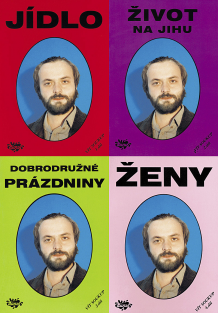




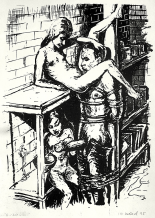
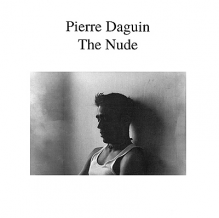
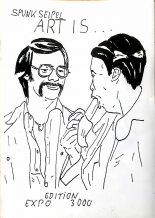
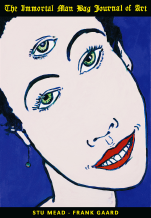


 New book by I.M.Jirous in English at our online bookshop.
New book by I.M.Jirous in English at our online bookshop.
Comentarios
Actualmente no hay comentariosAgregar nuevo comentario